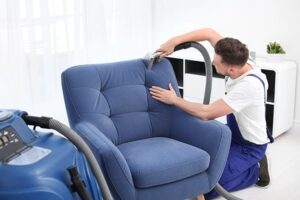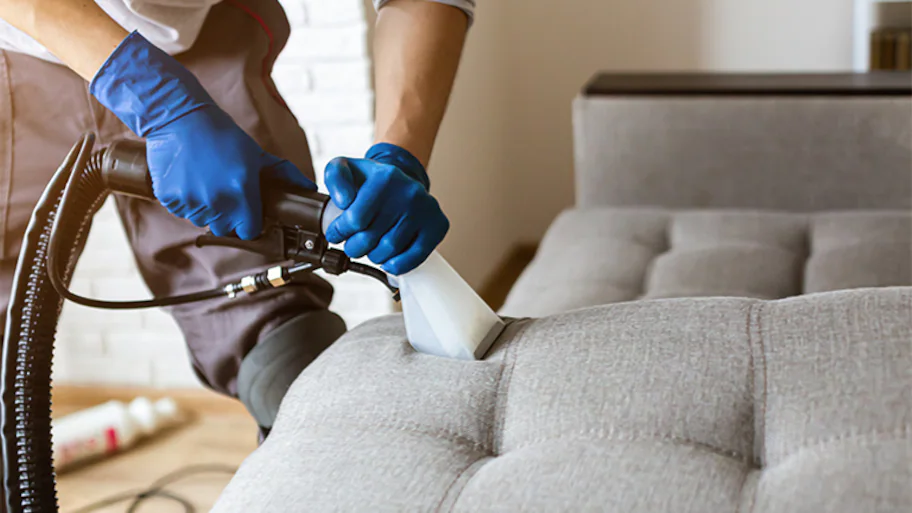The Ultimate Guide to Furniture Cleaning: Tips and Tricks for Every Material
Keeping your furniture cleaning is essential for maintaining a fresh and inviting home. Different materials require specific care to ensure longevity and prevent damage. Whether you have leather, wood, fabric, or metal furniture, understanding the right cleaning methods can help preserve their appearance and functionality.
Understanding Your Furniture’s Needs
 Every piece of furniture is made from different materials, each with unique characteristics. Cleaning methods that work for one material may not be suitable for another. Before using any cleaning solution, always check the manufacturer’s recommendations and test a small, hidden area to ensure the product does not cause damage.
Every piece of furniture is made from different materials, each with unique characteristics. Cleaning methods that work for one material may not be suitable for another. Before using any cleaning solution, always check the manufacturer’s recommendations and test a small, hidden area to ensure the product does not cause damage.
Cleaning Fabric Upholstery
Fabric furniture, such as sofas and armchairs, collects dust, dirt, and spills over time. Regular vacuuming with an upholstery attachment helps prevent debris from settling into the fibers. If your furniture has removable cushion covers, washing them according to care labels can keep them fresh.
For stains, a mild soap and water solution can be effective, but deeper stains may require a fabric cleaner. Avoid soaking the fabric, as excessive moisture can lead to mold or mildew. If the upholstery is delicate or expensive, professional cleaning may be the best option.
Caring for Leather Furniture
Leather furniture adds elegance and durability to a home but requires regular maintenance. Dusting with a soft cloth prevents dirt buildup. For deeper cleaning, a damp cloth with a small amount of mild soap can remove stains. It is important to avoid harsh chemicals, which can dry out and damage the leather.
To maintain softness and prevent cracks, applying a leather conditioner every few months helps keep the material supple. Spills should be wiped up immediately to prevent stains from setting. Direct sunlight can cause fading, so positioning leather furniture away from direct sunlight helps extend its lifespan.
Maintaining Wooden Furniture
Wood furniture can last for generations if properly maintained. Dusting with a microfiber cloth prevents scratches and buildup. When cleaning, a damp cloth with mild soap is often sufficient, but excessive water should be avoided, as wood absorbs moisture and can warp over time.
For polished or varnished wood, using a specialized wood cleaner enhances shine while protecting the finish. If scratches or water rings appear, a wood polish or a mixture of olive oil and vinegar can help restore the surface. Keeping wooden furniture away from heat sources and excessive humidity prevents warping and cracking.
Cleaning Metal Furniture
Metal furniture, whether stainless steel, aluminum, or wrought iron, is relatively easy to maintain. A damp cloth with mild soap removes dust and grime, while a metal polish helps restore shine. If rust appears, a mixture of vinegar and baking soda can help remove it without damaging the surface.
Outdoor metal furniture may require extra care, as exposure to moisture can accelerate corrosion. Using weather-resistant covers or applying a protective coating can help prevent rust and deterioration over time.

Taking Care of Glass Surfaces
Glass tabletops, shelves, and mirrors require regular cleaning to remove fingerprints and dust. A streak-free glass cleaner or a simple mixture of vinegar and water can keep glass surfaces looking spotless. Using a microfiber cloth prevents streaks and lint buildup.
To avoid scratches, it is important to use non-abrasive cleaning materials. Placing coasters and mats under objects helps prevent scratches and smudges on glass furniture.
Upholstery Protection and Prevention
Preventing stains and wear on upholstered furniture can extend its life. Using slipcovers or furniture protectors provides an extra layer of defense against spills and dirt. Regularly flipping and rotating cushions ensures even wear and prevents sagging.
If you have pets, keeping them off furniture or using pet-friendly covers can help reduce fur buildup and scratches. Vacuuming regularly and using fabric sprays designed for odor control can help maintain a fresh and clean living space.
Natural Cleaning Alternatives
For those who prefer eco-friendly cleaning options, natural ingredients can be effective. Vinegar, baking soda, and lemon juice work well for many surfaces without the use of harsh chemicals. For wooden furniture, a mixture of olive oil and lemon juice serves as a natural polish, while baking soda helps remove stains from fabric upholstery.
Essential oils can be added to homemade cleaners to leave a pleasant scent. However, it is important to test natural solutions on a small area before using them on an entire piece of furniture to ensure they do not cause damage.
